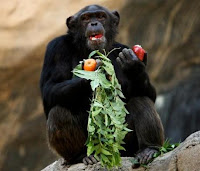High Altitude affects the human condition in a number of ways. Ever heard of a Timberline? If you are from Colorado like me you have. It is an actual line on a mountain, albeit an invisible one, that after you cross that line there are no more trees. It is really cool! There is not enough oxygen past that elevation to support tree growth. People too have a hard time breathing the thin oxygen.
When you visit Denver from California there are a number of short-term adaptations you will notice. You may become light headed or nauseous until the adaptations occur. Your breathing and heart rate will accelerate up to twice as fast to accommodate the low levels of oxygen.
Over time, aka a facultative adaptation, your cheeks will turn a rosy red color due to the excess red blood cells your body is producing to carry more oxygen. Don’t worry; it happens to everyone so you won’t look weird!
A developmental change would be noticeable in one’s offspring. Lung size increases to accommodate the conditions. Where your body had to make minute changes to get used to the condition, your baby would be born used to it. Cool huh?
A cultural adaptation is easy to spot. Sun block is seen more in CO than on the beaches of CA. You don’t see sun tan oil glistening on the shoulders of sun worshipers… they would be fried in 5 minutes! Being a mile closer to the sun doesn’t seem like much when the sun is as far away as it is, but being a red head, I wont tan in the CO sun. Long sleeve shirts will be seen even in the dead of summer because of the harsh rays. Hats, shoes and pants are not only wintertime dons in this climate!
This is not just an assignment but also a pre-summer guide to traveling. This information is highly useful to anyone planning a trip to the Rockies this summer. And a word from experience… Even if you’re like me and only get asthma symptoms every once in a blue moon… take an inhaler! Shorts are fantastic but I suggest alternating between jeans and shorts as to not fry your legs, and as cute as camis are in the summertime… cover up those shoulders!
The United States is a melting pot of races. There is no one race in High Altitude states. You cannot look at a Coloradoan and a Californian and differentiate between them based on physical looks alone. Asians and Blacks look different, this is a fact, but you cannot stereotype them based on looks alone. When you live in different climates, you become adapted to each one. Race has nothing to do with it unless you are indigenous to that area.
 |
| Pulse and breathing Doubled |
 |
| Red Cheeks From Increased Blood Production. |
 |
| Increased lung size in following generations or generations native to high altitude. |
 |
| Long sleeves, long shorts and shoes not uncommon in summer months. |














